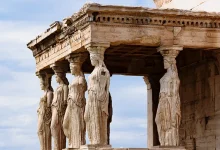Syria, a country located in the heart of the Middle East, has a rich and diverse history that is deeply reflected in its archaeological sites. These ancient ruins and historical artifacts offer valuable insights into the cultural and historical evolution of the region. The archaeological heritage of Syria is a testament to its role as a cradle of civilization, and its sites are crucial for understanding the ancient Near East.
Ancient Cities and Ruins
One of the most significant archaeological sites in Syria is the ancient city of Palmyra. Located in the Syrian Desert, Palmyra was a major trade center during the Roman Empire. It flourished as a crossroads between the Roman and Persian empires, and its strategic location allowed it to become a melting pot of cultures. The city’s ruins include impressive Roman temples, colonnaded streets, and the grandiose Arch of Triumph. Palmyra’s architecture is notable for its blending of Greco-Roman and local styles, which reflects its cosmopolitan nature.
Another key site is the ancient city of Ebla, which was a major urban center during the 3rd millennium BCE. Ebla is renowned for its vast archive of clay tablets, which were discovered in the 1970s. These tablets, written in the Eblaite language, provide crucial information about the early Semitic cultures and the political and economic history of the region. The ruins of Ebla include the remains of a palace, temples, and city walls, which offer a glimpse into the sophisticated urban planning and architecture of the time.
The ancient city of Ugarit, located on the Mediterranean coast, is also of immense historical significance. Ugarit was a major Canaanite city-state during the Late Bronze Age. It is known for its well-preserved cuneiform tablets, which are crucial for understanding the Canaanite language and literature. The city’s ruins include a royal palace, temples, and a complex system of fortifications. The discovery of Ugarit’s library has provided scholars with valuable information about the religious and cultural practices of the ancient Canaanites.
Medieval and Islamic Sites
In addition to its ancient ruins, Syria is home to several important medieval and Islamic sites. The Umayyad Mosque in Damascus, also known as the Great Mosque of Damascus, is one of the most significant Islamic structures in the world. Built in the early 8th century by the Umayyad Caliphate, the mosque is renowned for its architectural grandeur and historical importance. It incorporates elements of Byzantine architecture, as it was constructed on the site of a former Christian cathedral dedicated to John the Baptist. The mosque’s intricate mosaics, vast prayer hall, and impressive minarets are key features of its design.
The Citadel of Aleppo is another prominent medieval site. This massive fortress, which dates back to the 13th century, was a critical stronghold during the Crusades and has served various functions throughout its history. The citadel is strategically located on a hill, providing commanding views of the surrounding city and region. Its architecture reflects a mix of Islamic, Crusader, and Ottoman influences, showcasing the city’s diverse history and the various powers that controlled it over the centuries.
Preservation and Challenges
The preservation of Syria’s archaeological heritage has faced significant challenges, especially in recent years. The Syrian Civil War, which began in 2011, has had a devastating impact on the country’s cultural sites. The conflict has led to the destruction of several historic landmarks and the looting of archaeological treasures. Efforts to protect and preserve these sites have been complicated by the ongoing violence and instability in the region.
International organizations and local authorities have made concerted efforts to document and protect Syria’s cultural heritage. Initiatives have included digital documentation projects, international cooperation for preservation, and emergency response measures to safeguard threatened sites. Despite these efforts, the scale of the damage and the challenges of working in a conflict zone have made preservation work particularly difficult.
Conclusion
Syria’s archaeological heritage is a crucial component of our understanding of ancient civilizations and the historical development of the Near East. The ruins of cities like Palmyra, Ebla, and Ugarit offer invaluable insights into the region’s rich past, while medieval sites like the Umayyad Mosque and the Citadel of Aleppo highlight the diverse cultural and historical influences that have shaped Syria over the centuries. The ongoing preservation efforts are vital to ensuring that these irreplaceable sites are protected for future generations. The study and preservation of Syria’s archaeological sites not only contribute to our knowledge of ancient history but also serve as a reminder of the enduring cultural significance of this storied region.

